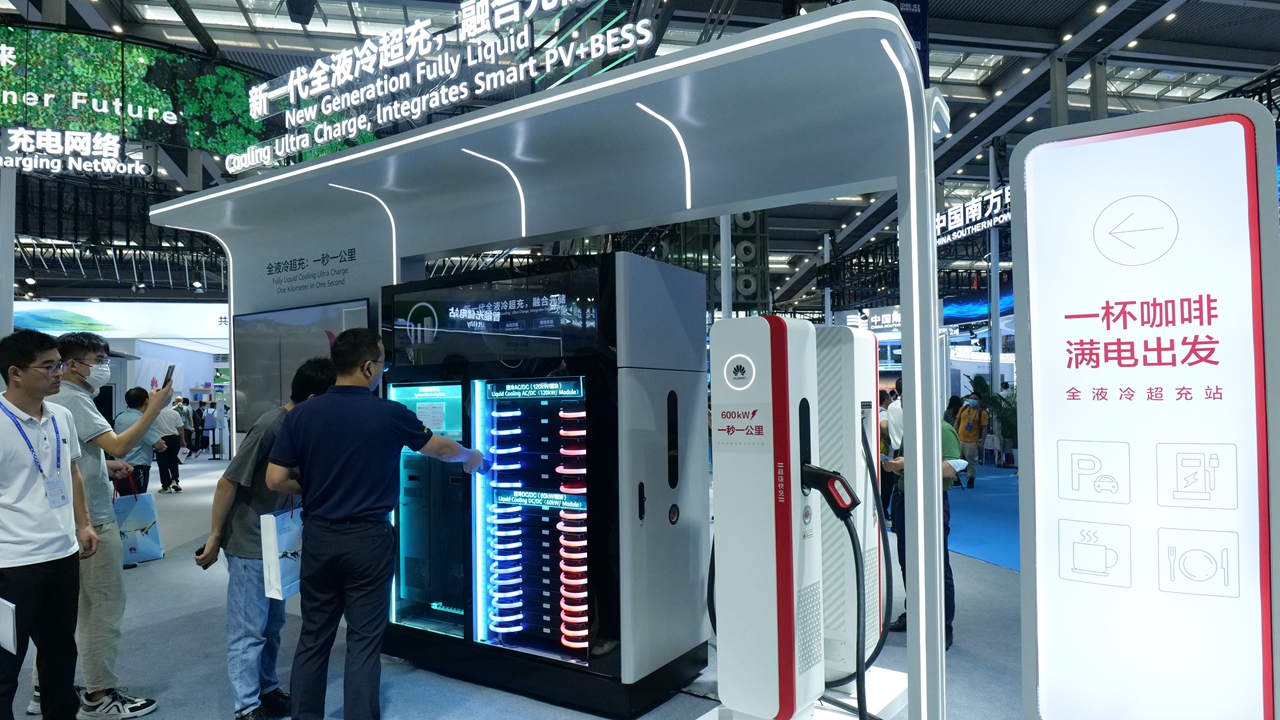Editor’s Note:
Since the annual “two sessions” concluded earlier this March, the term“new quality productive forces” has emerged as a buzzword and gained widespread attention in the context of China’s economic upgrading.
Marked by innovation, new quality productive forces are advanced forms of productivity that represent a departure from traditional economic growth models. These forces align with China’s new development philosophy, which prioritizes innovation and sustainability. They encompass high tech, efficiency, and high-quality productivity methods.
Shenzhen's pivotal role in shaping the future of the new energy vehicle (NEV) industry in China has been further solidified. Data show the city produced 1.78 million NEVs last year, accounting for nearly 20% of the national total.
This statistic underscores Shenzhen's manufacturing prowess. Projections suggest that NEV production in Shenzhen will surpass the 2 million mark by 2025, with the industry’s output expected to hit a staggering 1 trillion yuan (US$138 billion). The city’s dominance extends to the charging pile sector, as it holds over half of the country’s market share for charging station equipment.
Rapid growth in the city’s NEV sector is supported by the synergistic development of the upstream and downstream industrial chain, which includes lithium battery materials, battery manufacturing, and electric vehicle control systems.
New impetus
The State Administration for Market Supervision has recently approved the establishment of the National Electric Vehicle Battery and Charging System Industrial Metrology Testing Center in Shenzhen. The first of its kind in China, the center aims to reinforce the NEV sector with essential technical support and boost its core competitiveness.
Shenzhen’s commitment to becoming a leading hub for producing electric vehicles and charging infrastructure is evident in its industrial landscape, as the city is home to prominent firms like Huawei and BYD.
With electric vehicle usage at a global all-time high, Shenzhen urgently requires advanced metrology for battery and charging technologies.

A new-generation fully liquid-cooling supercharging demonstration station, jointly built by Huawei and China Southern Power Grid, is on display at the 2023 International Digital Energy Expo at the Shenzhen Convention and Exhibition Center in Futian District in June. Xinhua
Shenzhen has set ambitious goals aimed at transforming itself into a new-generation world-class auto city.
The city plans to construct 50,000 new charging poles this year and have 1,000 supercharging stations by the end of this year, envisioning a future where the number of supercharging facilities surpasses traditional fuel stations.
Shenzhen had already opened 239 supercharging stations by the end of February and there are an additional 75 in the pipeline.
Zhang Guoling, an associate professor with the School of Urban Transport and Logistics at the Shenzhen Technology University, believes that as Shenzhen moves to become a city of automobiles and global leader in charging technology, the importance of efficient and reliable charging infrastructure is becoming increasingly apparent.
Furthermore, Zhang highlighted how crucial these facilities are for promoting the city’s sustainable and green development.
This holistic approach, which combines advancements in metrology with strategic infrastructure development, positions Shenzhen at the forefront of an electric vehicle revolution that will drive the world towards a cleaner, more sustainable automotive future.
Talent hold the key
The Ministry of Education has recently approved plans for four universities in Shenzhen to begin enrolling undergraduate students in seven pioneering disciplines, including artificial intelligence, industrial engineering, and unmanned aerial vehicles, starting in 2024.
This strategic move underscores Shenzhen’s commitment to developing new quality productive forces, focusing keenly on harnessing scientific and technological innovation as a new engine of growth, according to Xia Wenbin, a professor at the Southern University of Science and Technology. He stressed the significance of aligning university disciplines with the city’s strategic goals and urged local universities to refine their curricula, particularly in areas such as quantum mechanics, artificial intelligence, life sciences, and new energy. He highlighted the importance of fostering innovation-driven enterprises and urged them to leverage groundbreaking scientific research to propel industrial advancement.
“Innovation is paramount in the development of new quality productive forces, with human creativity being the cornerstone,” said Cao Zhongxiong, director of the Institute for Digital Economy and Global Strategy at the China Development Institute, a think tank based in Shenzhen.
“Shenzhen is well equipped with institutional mechanisms and an ecosystem that nurtures talent creativity, alongside fostering an environment ripe for social innovation and entrepreneurship.”
Despite Shenzhen’s extensive industrial chain, Cao warns that conventional approaches may fall short in the wake of emerging technologies, industries, and business models.
He pointed out that globally, regions like Silicon Valley in the U.S. have successfully established an “innovation consortium” model. This model, driven by tech companies and supported by universities and R&D institutions, thrives on a dense concentration of intellectual resources and robust innovation capabilities. Shenzhen could draw valuable lessons from such examples in nurturing its own ecosystem. A critical component of this ecosystem is the protection of intellectual property rights (IPR). Without a robust IPR protection mechanism, technological innovations risk being plagiarized or infringed upon, potentially undermining the growth of new quality productive forces.
Cao also advocated for deepened reforms in Shenzhen. He suggested that market-economy institutions should be enhanced, including market access, fair competition, and social credit systems. Such reforms will not only foster a lawful and equitable business environment, but also provide holistic support for nurturing new quality productive forces.

















